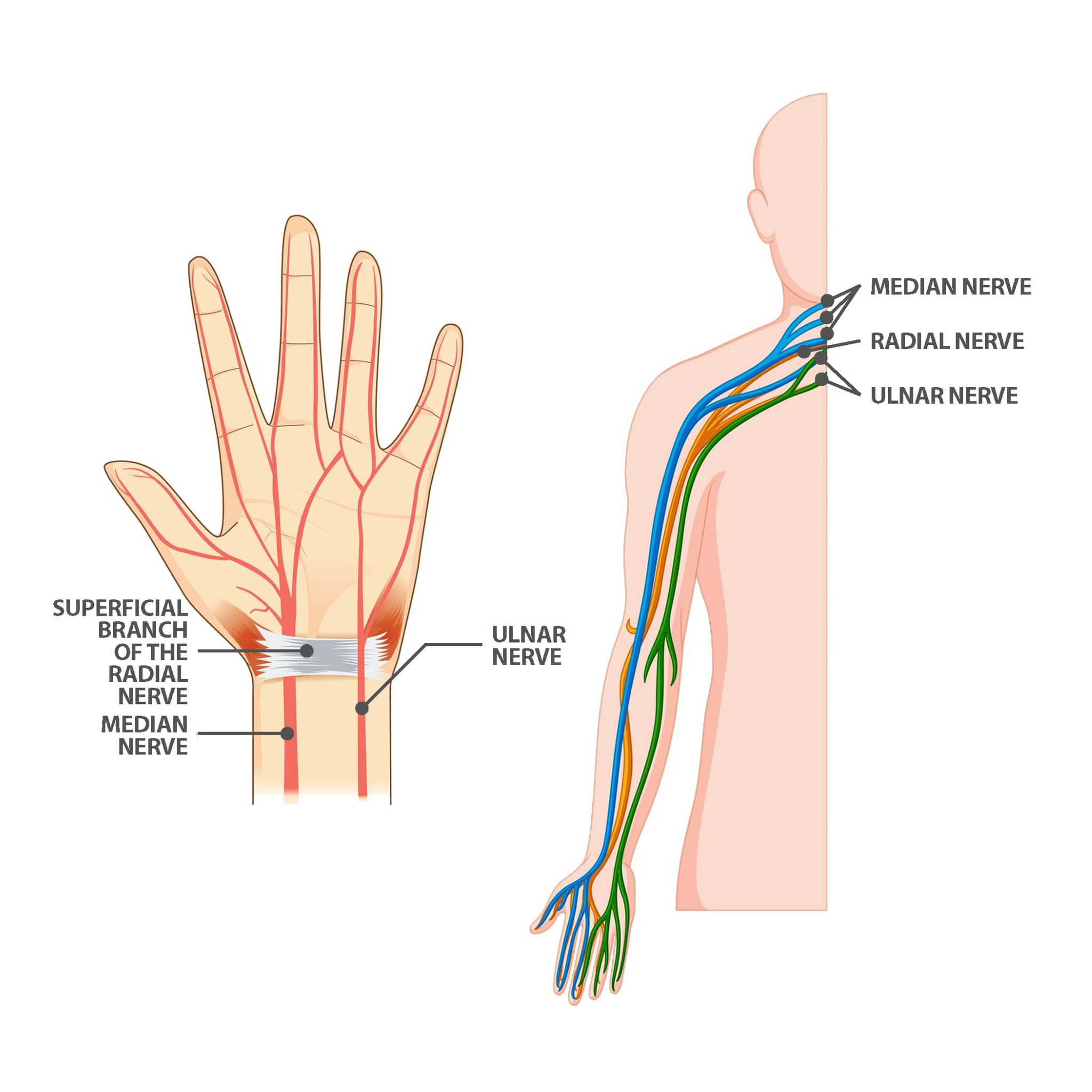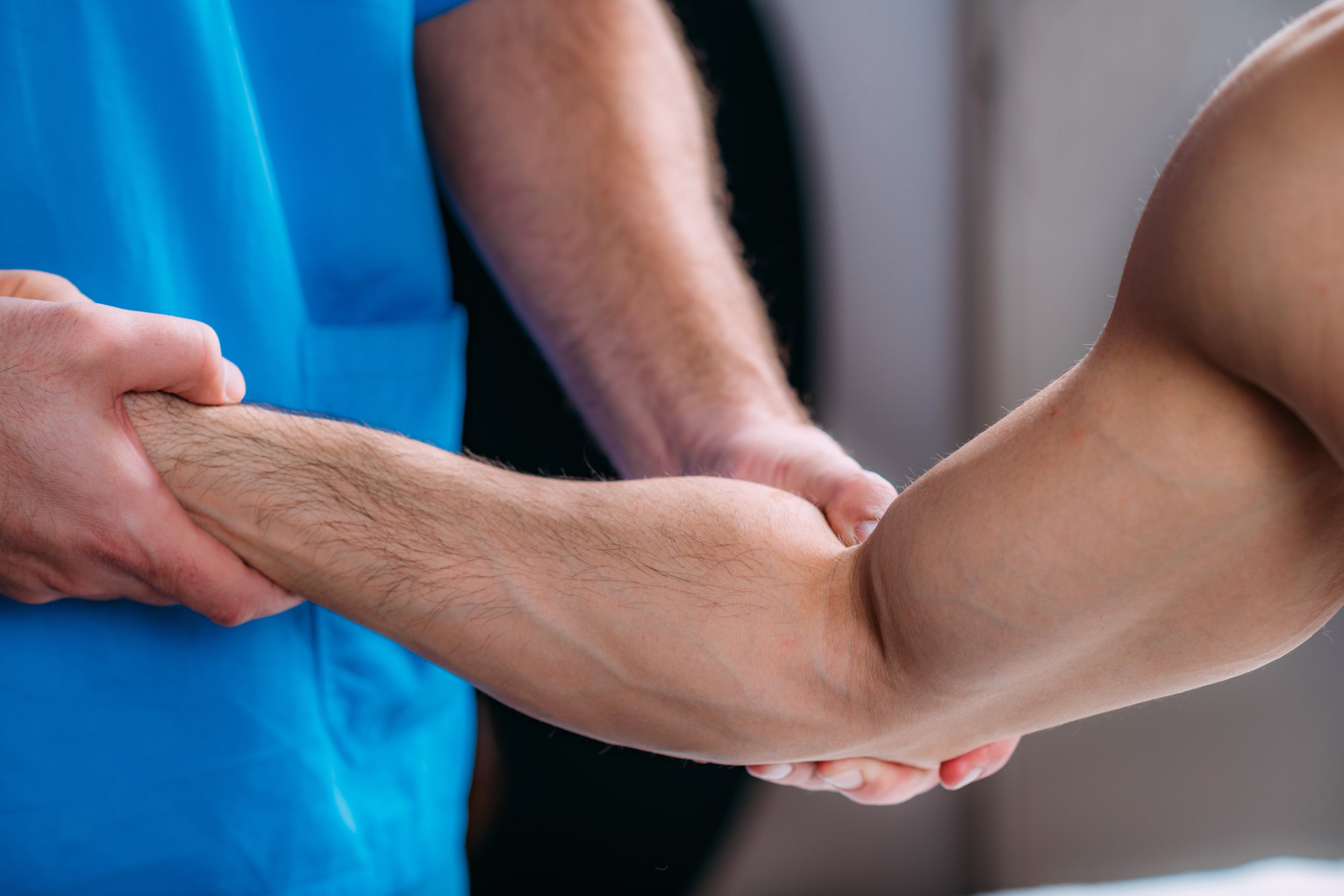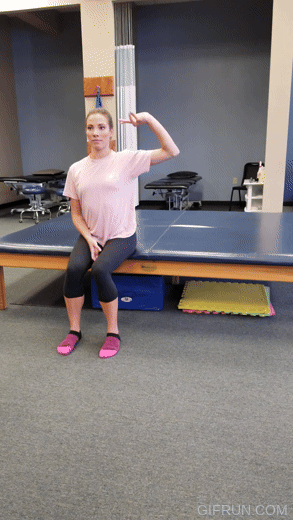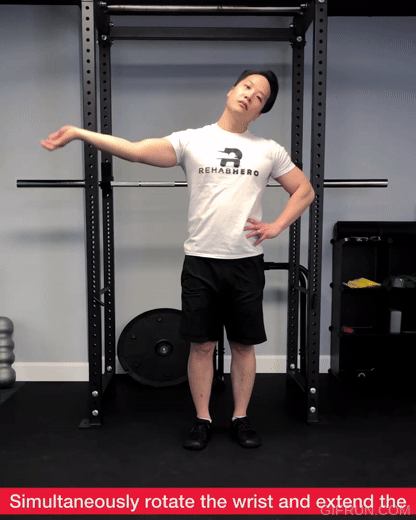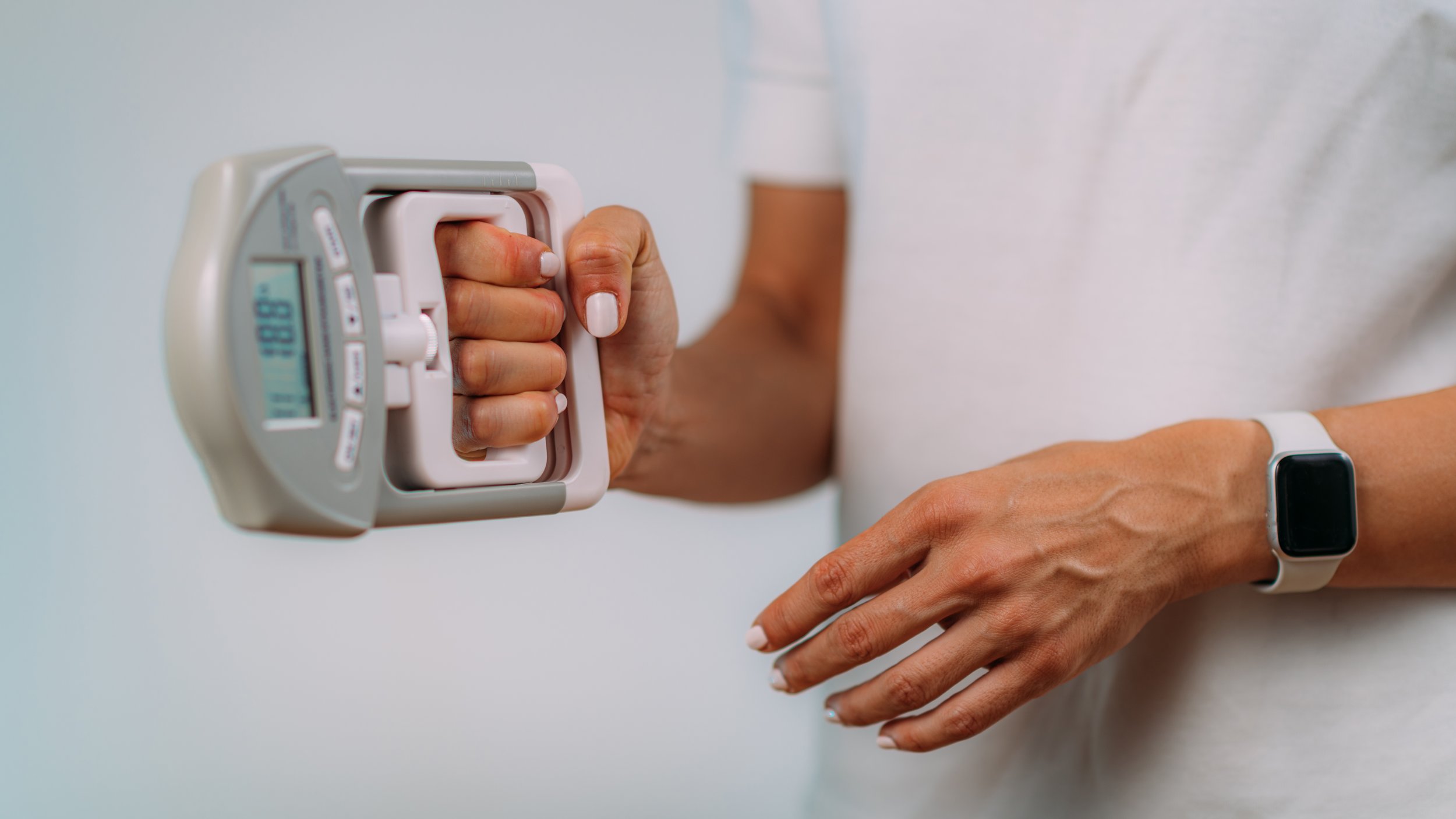Ulnar Nerve Entrapment Causing Pinky Or Ring Finger Numbness – Exercises To Do
Ulnar nerve entrapment, also known as cubital tunnel syndrome, is a common condition caused by compression or irritation of the ulnar nerve, usually at the inner elbow. The ulnar nerve runs from the neck to the hand, supplying sensation and motor control to the pinky and ring finger side of the hand. As a result, ulnar nerve entrapment can lead to numbness, tingling, or weakness in the pinky and ring fingers. If left untreated, it can lead to permanent nerve damage and muscle weakness.
Keep reading to learn about the causes of ulnar nerve entrapment, the common symptoms, and the treatment options for this condition. Discover why physical therapy may be the best treatment choice.
Causes Of Ulnar Nerve Entrapment
Ulnar nerve entrapment can be caused by a variety of factors, including repetitive motions, trauma, and medical conditions. Repetitive motions, such as those performed during certain occupations or sports, can cause the ulnar nerve to become compressed over time. Trauma, such as a fracture or dislocation of the elbow or wrist, can also lead to ulnar nerve entrapment. Medical conditions, such as arthritis or diabetes, may increase the risk of ulnar nerve entrapment. As a result of the pinched nerve in the elbow, there can be a range of symptoms, including tingling in the right or left arm from the elbow to the hand.
Symptoms Of Ulnar Nerve Entrapment
The symptoms of ulnar nerve entrapment typically include numbness in the pinky finger and ring finger, tingling, or weakness in the pinky and ring fingers. In some cases, pain may also be present.
The symptoms may occur suddenly or develop gradually over time. In some cases, the symptoms may be worse at night or when the affected arm is in a certain position, such as when the elbow is bent. numbness in the pinky finger. As a result, any symptoms like a numb pinky finger should be assessed by a medical professional for a proper diagnosis.
Red Flag Symptoms
While ulnar nerve entrapment is a common condition, there are certain "red flag" symptoms that may indicate a more serious underlying issue. These include:
Sudden onset of severe pain in the arm, especially if it is accompanied by weakness, numbness, or tingling.
Loss of sensation or weakness in the thumb, index, or middle fingers, in addition to the pinky and ring fingers – this can be a sign of a more widespread nerve problem.
Weakness in the arm or hand, especially if it is accompanied by loss of coordination or difficulty performing everyday tasks.
Difficulty breathing or swallowing, which can be a sign of nerve damage in the neck.
Swelling or redness in the arm, which can be a sign of infection or inflammation.
Loss of bladder or bowel control, which can be a sign of nerve damage in the lower back.
It is important to seek medical attention immediately for any of these red flag symptoms. Prompt diagnosis and treatment are essential for preventing long-term complications and restoring nerve function.
Treatment Options For Ulnar Nerve Entrapment
The treatment for ulnar nerve entrapment depends on the severity of the condition and the underlying cause. In mild cases, conservative treatments may be effective. In more severe cases, surgery may be necessary.
Conservative Treatments
Conservative treatments for ulnar nerve entrapment include:
Rest and immobilization: Resting the affected arm and avoiding activities that exacerbate symptoms can help reduce inflammation and allow the nerve to heal.
Physical therapy: Physical therapy can help improve strength and flexibility in the affected arm and reduce pressure on the ulnar nerve.
Medications: Over-the-counter pain relievers may be recommended or prescribed by a doctor to help alleviate pain and inflammation.
Surgical Treatments
If conservative treatments are not effective or if the condition is severe, surgery may be necessary. The type of surgery will depend on the underlying cause of the ulnar nerve entrapment. Some common surgical treatments include:
Cubital tunnel release: This surgery involves releasing the pressure on the ulnar nerve by creating more space in the cubital tunnel. This can be done by removing part of the bone or repositioning the nerve.
Ulnar nerve transposition: This surgery involves moving the ulnar nerve to a new position in order to reduce pressure on the nerve. This procedure can be performed as an outpatient, and patients can often return to normal activities within a few weeks.
Why Choose Physical Therapy
Physical therapy can be an effective treatment option for ulnar nerve entrapment, either as a standalone treatment or in combination with other treatments such as rest and medications.
A physical therapist can design a personalized treatment plan to help relieve symptoms and improve strength and mobility in the affected arm, which may include:
Nerve gliding exercises: These exercises involve moving the affected arm in a specific way to help free up the ulnar nerve and allow it to glide more easily through the surrounding tissues.
Strengthening exercises: Physical therapy can help improve strength in the muscles of the arm and hand, which can help better support the ulnar nerve. Exercises may include wrist curls, grip strengthening exercises, and other exercises designed to target the muscles that control finger and hand movement.
Posture and ergonomics training: Poor posture and ergonomics can contribute to ulnar nerve entrapment by putting unnecessary stress on the arm and wrist. A physical therapist can help the patient identify and correct any ergonomic issues in their workplace or home environment, as well as provide guidance on maintaining proper posture during daily activities.
Manual therapy: A physical therapist may use hands-on techniques such as massage or mobilization to help relieve muscle tension and improve circulation in the affected area. This can help reduce pain and improve range of motion in the arm and hand.
Education and self-care: A physical therapist can provide education on ways to manage symptoms at home, such as how to modify activities to reduce pressure on the ulnar nerve and how to apply heat or ice to the affected area.
Chronic pain and movement issues can be challenging to deal with, and a physical therapist can provide a range of treatment options to manage and treat the underlying cause of the problem. Overall, physical therapy can be valuable for ulnar nerve entrapment, helping patients regain function and improve their quality of life.
Specific Exercises For Ulnar Nerve Entrapment
Some of the specific exercises a physical therapist may recommend for ulnar nerve entrapment include:
Ulnar Nerve Glides: To complete this exercise, the physical therapist will direct you to move your wrist and fingers up and done through a limited range of motion, focusing on stretching and gliding the ulnar nerve. The exercise can be progressed by increasing the range of motion or repetitions of the exercise.
Wrist Flexor Stretch: For this exercise, the physical therapist will ask you to extend your affected arm in front of you with your palm facing up. Then, using your other hand, gently bend your wrist backward until you feel a stretch in the forearm. The stretch can be held for several seconds, or as per the directions of the physical therapist.
Ulnar Nerve Flossing: Ulnar nerve flossing is a way to increase mobility of the ulnar nerve. For this exercise, sit or stand with good posture. Extend your affected arm out to the side, parallel to the ground. Bend your elbow and bring your hand toward your opposite shoulder, while simultaneously rotating your head away from the affected side. It’s important to complete this exercise correctly for the best effect, so follow the specific instructions of your physical therapist.
Pronator Teres Stretch: To complete this exercise, the physical therapist will recommend extending your affected arm straight in front of you with your palm facing down. Use your other hand to gently bend your wrist downward until you feel a stretch in the forearm. The stretch can be held for several seconds, and repeated as appropriate.
Forearm strengthening: Strength training is a core component of rehabilitation. The physical therapist will guide a series of strength exercises that target the muscles of the forearm and hand, such as wrist curls, wrist extensions, and grip strengthening exercises. It’s important to start with light resistance and gradually increase as tolerated.
Exercises for ulnar nerve entrapment should be supervised by a physical therapist, as the incorrect technique or dosage may cause irritation of the nerve or worsening of symptoms. The physical therapist can increase or decrease the duration, intensity, or number of repetitions to progress or regress the exercise, depending on the symptoms.
Recovery And Prevention For Ulnar Nerve Entrapment
Preventing ulnar nerve entrapment involves reducing the risk factors that can lead to the condition. This may involve:
Avoiding repetitive motions or activities that put pressure on the ulnar nerve.
Maintaining good posture and ergonomics, especially when sitting or working at a desk.
Wearing protective gear or taking breaks during sports or other high-risk activities.
Keeping underlying medical conditions under control, such as diabetes or arthritis, which can increase the risk of nerve damage.
Regularly stretching and exercising to maintain flexibility and strength in the arms and hands.
Why Is My Pinky Numb?
If you’ve become alarmed wondering why your pinky finger is numb, it’s important to seek prompt and appropriate assessment and treatment. Most cases of ulnar nerve entrapment can be successfully managed with conservative treatments such as rest and physical therapy, however surgical treatments may be necessary in more severe cases.
Consult an experienced and trained physical therapist to determine the underlying cause and appropriate treatment options.


